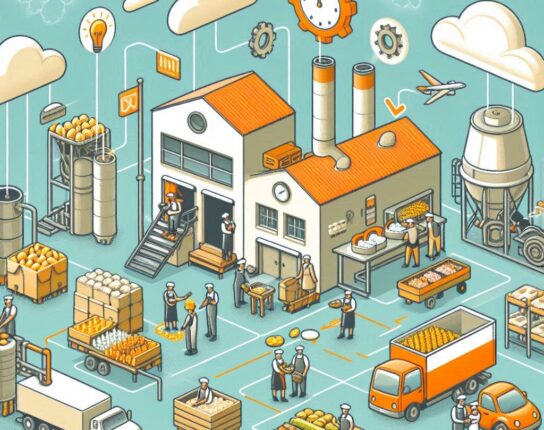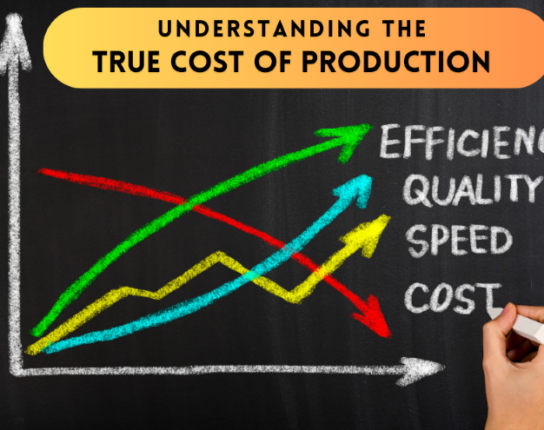We’ve already spoken about the inevitable increase in costs that food manufacturers have been saddled with, but how can they reduce costs to help mitigate the storm, while maintaining profitability and relationships with retailers and customers?
Reducing costs is not a new challenge for food manufacturers, where profit margins are famously slim. Here are some ways to ensure you’re keeping these costs as low as possible:
Make sure your equipment keeps up with you
Preventative maintenance may not sound like the most exciting job to do, but it’s the best way to ensure the uptime of your lines. If a line goes down, you instantly lose capacity and your costs rocket up. Regular maintenance can help prevent breakdowns, and is one of the easiest ways to reduce costs in food manufacturing, decreasing the need to replace pricey parts.
However, it’s also important to note that you can’t always follow the “if it ain’t broke” philosophy. It is important to assess whether holding onto your old equipment is saving you money or actually costing you more in the long run instead of investing in newer equipment now. Slow equipment that doesn’t automate food production processes or isn’t efficient enough to produce the quantities you need daily to maintain profit may be hurting your bottom line.
Newer equipment tends to be more energy efficient and easier and less costly to maintain – with replacement parts being easy to find. In these cases, what may seem like a heavy investment upfront is an investment into a more efficient manufacturing process, cutting your production costs and ultimately increasing your revenue.
Reduce Line Change Overs
Food manufacturers often use the same equipment for different products, but having too much variety can add production costs and reduce profits with frequent changeovers. Costs can include those for material movement, utilities, counting and transaction processing. Product changeovers and cleaning of production and storage equipment between products also add inefficiencies to the manufacturing process.
Limiting variety and focusing on high-demand or core products can help companies increase their efficiencies and output, and with the effective use of software, they can anticipate demand and supply chain issues and be agile with production.
Run long production runs
With advanced scheduling techniques, you can better forecast your demand allowing you to run production on certain products longer, approaching a make-to-stock scenario. While food manufacturers usually follow make-to-order principles to promote just-in-time distribution, the reality is that things are very unusual right now. The pandemic has inspired food companies to reapproach production processes and think ahead and consider stockpiling equipment and ingredients.
Energy conservation & sustainability
Consider participating in a program like Food Processing Focus, which creates partnerships between food processing companies and the EPA’s Energy Star Program to improve energy efficiency within their operations. Tools are available here to help improve manufacturing energy efficiency, save money, and reduce greenhouse gas emissions.
While it may not seem like an obvious step, using environmentally friendly packaging in another way to help reduce food manufacturing costs. When using thinner or naturally occurring materials such as bamboo or cardboard, you can usually use less materials to package your goods. Environmentally-friendly packaging is also more likely to attract the consumer, with 46% of consumers willing to pay more for a food product if it was presented in packaging that’s better for the environment than plastic. The additional bonus being not further contributing to landfills – in 2017, food packaging made up 80.1 million tons of municipal solid waste.
Efficient food management to reduce costs
It comes as no surprise that for food manufacturers, food management is an important part in managing production costs. Using historical data and managing your supply chain can help you anticipate food demand accurately and avoid over-buying ingredients. Tracking year-over-year orders will help you identify customer buying patterns, and allow you to prepare for seasonal rushes and slow-downs and manage manufacturing processes accordingly.
Using a FEFO (first expiry, first-out) system helps perishable food businesses send out the batch they received first so that it doesn’t expire. If you need to know which batch you received first, lot tracking helps you by keeping a record of the full supply chain.
Help your employees help you
Having well-trained staff and a robust food inventory management software application go hand in hand in ensuring your business operations are efficient and as a result reducing food manufacturing costs. New technologies, like a direct store delivery system, can expedite your workflow and can help your employees as well, by taking the guesswork out of their daily tasks, less dreaded paperwork and also reducing the chances of human error. For you, fewer mistakes means more sales, and for your workers, fewer mistakes means less stressful workdays.
With workers getting the chance to do their jobs and not get caught up in administrative tasks, they are less likely to feel like just ‘another cog in the machine’. And instead of filling orders, drivers have the chance to recognize patterns in demand and work directly with other store representatives to brainstorm solutions. In any job, the chance to make important decisions is also a chance to take pride in a job well done.
Reduce costs by making your system do the work for you
There are many options available for tackling the everyday operations of your food manufacturing business. While different software packages meet different specific needs, you will find the most success with software that lets different departments communicate effectively with each other. This is the primary goal of Enterprise Resource Planning (ERP).
ERP systems integrate financial data, supply chain management, manufacturing processes, human resources data, and much more. These separate systems work together to streamline a business’ overall operations.
While the benefits of ERP software are fairly obvious for a large enterprise, it can also be beneficial for businesses of any size – even small businesses.
Harvest Food Solutions offers HarvestERP to help you manage every aspect of your perishable foods manufacturing process. By staying on top of resource management, you can avoid costly mistakes and reduce ingredient waste. Our software is a specialized version of Microsoft Dynamics NAV ERP, tailored specifically for the perishable foods market.
Whether you deal with dairy, vegetables, pet food, snacks, organics, specialty food, or bakery items, we can help raise your business to the next level. Stop wasting time, losing money, and throwing away resources by bringing peak efficiency to your production system.
We at Harvest Food Solutions are ready to help you improve your daily operations with ERP. Contact us today and let’s talk!










